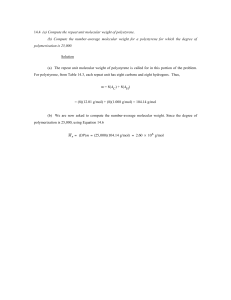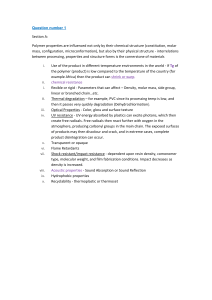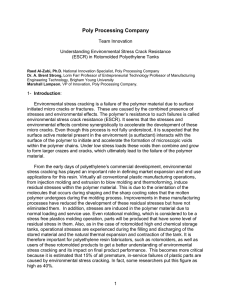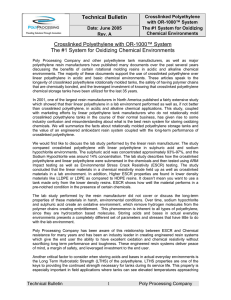Sample questions
advertisement
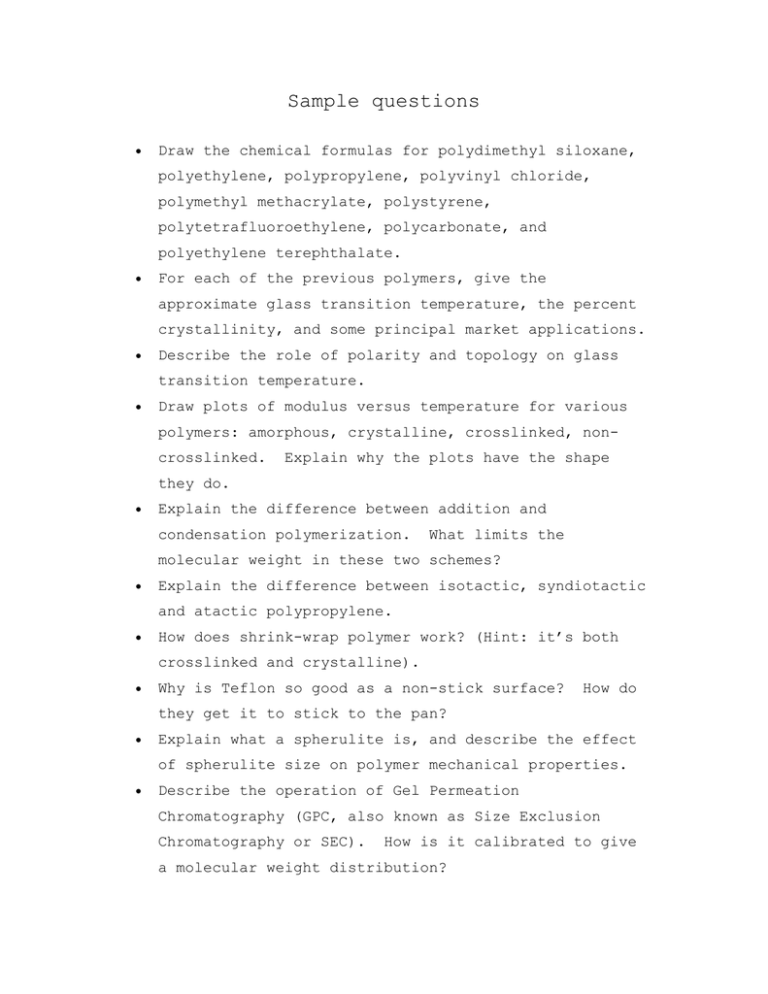
Sample questions • Draw the chemical formulas for polydimethyl siloxane, polyethylene, polypropylene, polyvinyl chloride, polymethyl methacrylate, polystyrene, polytetrafluoroethylene, polycarbonate, and polyethylene terephthalate. • For each of the previous polymers, give the approximate glass transition temperature, the percent crystallinity, and some principal market applications. • Describe the role of polarity and topology on glass transition temperature. • Draw plots of modulus versus temperature for various polymers: amorphous, crystalline, crosslinked, noncrosslinked. Explain why the plots have the shape they do. • Explain the difference between addition and condensation polymerization. What limits the molecular weight in these two schemes? • Explain the difference between isotactic, syndiotactic and atactic polypropylene. • How does shrink-wrap polymer work? (Hint: it’s both crosslinked and crystalline). • Why is Teflon so good as a non-stick surface? How do they get it to stick to the pan? • Explain what a spherulite is, and describe the effect of spherulite size on polymer mechanical properties. • Describe the operation of Gel Permeation Chromatography (GPC, also known as Size Exclusion Chromatography or SEC). How is it calibrated to give a molecular weight distribution? • Define number- weight- and z-average molecular weight, and dispersivity. • Explain the effect of molecular weight on tensile strength and viscosity. What is the “entanglement molecular weight,” and how can it be measured? Give an example of an application of an ultra-high molecular weight polymer. • Explain why polypropylene has a lower enthalpy of crystallization than polyethylene, but a higher melting temperature. • Explain why spherulites appear as “Maltese crosses” when viewed in a polarizing microscope. • Describe the “fringed micelle” and lamellar models of polymer crystals. • Write out the equation for x-direction strain of a material in terms of a 2-D stress state, and the material’s tensile modulus, shear modulus, Poisson’s ratio, and coefficient of thermal expansion. • Define Poisson’s ratio and give its approximate numerical value for plastics, metals, and ceramics. Explain the variation in terms of molecular parameters. • Show that the area under a stress-strain diagram is the strain energy per unit volume in the material. • What is meant by the term “elastic?” • Explain how necking is usually responsible for the maximum seen in stress-strain diagrams. • What are “principal” stresses? • Give examples of kinematic, constitutive and “Principal” planes? equilibrium equations in solid mechanics. • Derive the equation for stress normal to an inclined plane in a uniaxially loaded specimen. • What do we mean by “dilatational” and “deviatoric” stresses and strains? • Why does rubber have to be crosslinked to be useful (usually)? How is this done (show the chemistry). How can the crosslink density be measured? • Only cis-1,4 polymerization of butadiene produces a good elastomer. What are some other possibilities, and why do they not make good rubbers? How do we get the form we want? • Outline the concepts involved in the kinetic theory of rubber elasticity. • Give the relation for strain energy in a rubber as a function of the extension ratios, and from this develop equations governing the extension ratio and the applied load for uniaxial tension, equal biaxial tension, and unequal biaxial tension. • Derive a formula for the circumferential wall stress in an inflated spherical balloon. Explain why there is a maximum in the relation between internal pressure and radius of the balloon. What happens to the diameter of an inflated balloon if it is placed in a heated oven? Explain.
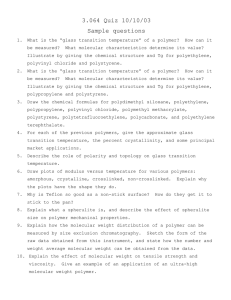
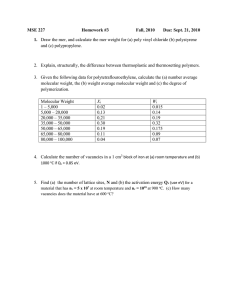

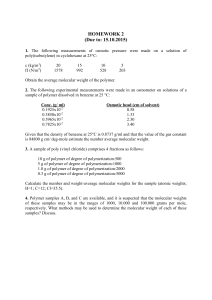



![MECH340 Hw-3[12298]](http://s3.studylib.net/store/data/025570762_1-dd91cd4dc2298094f350b6ab65ac2b13-300x300.png)
